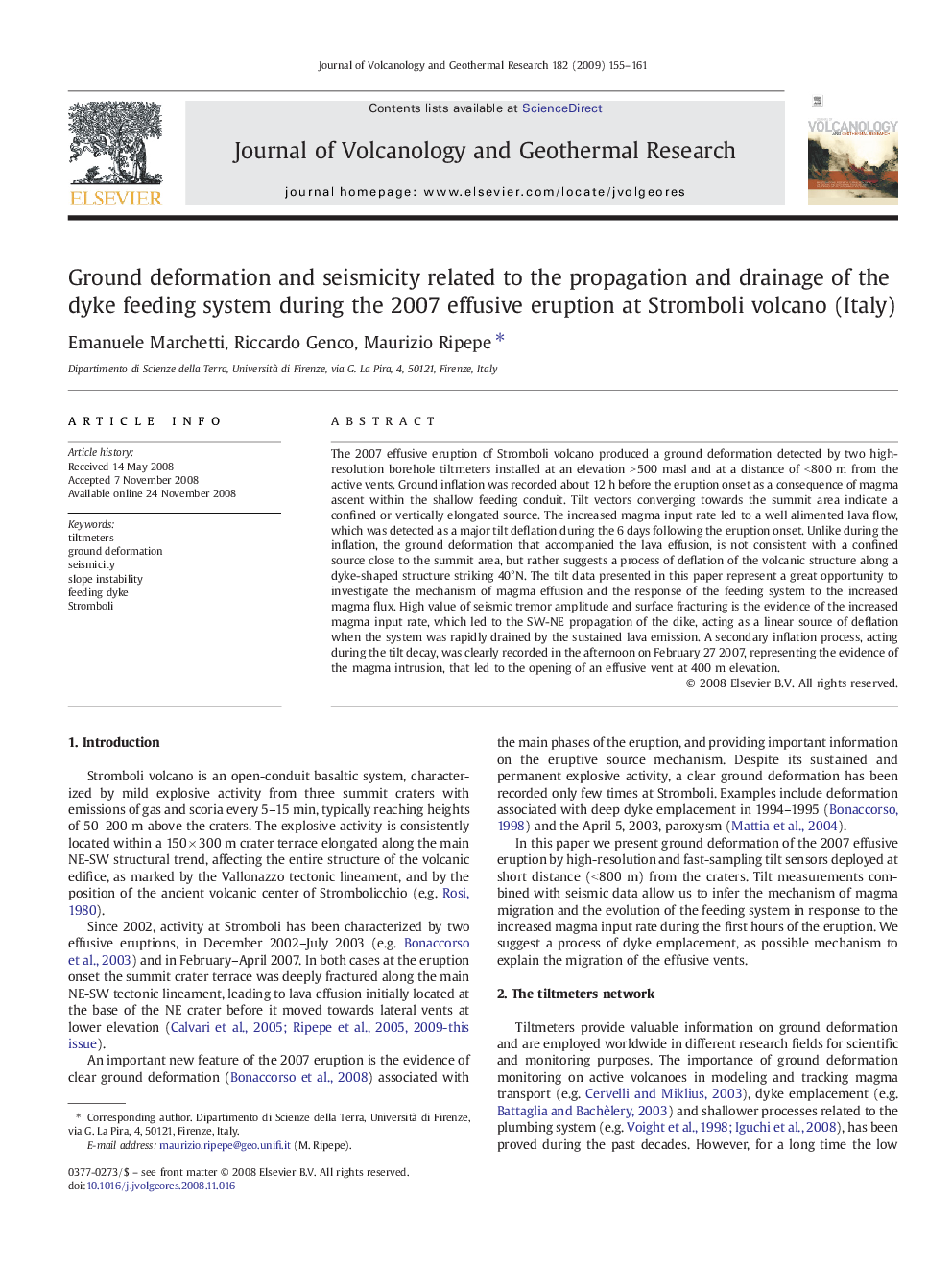| Article ID | Journal | Published Year | Pages | File Type |
|---|---|---|---|---|
| 4714211 | Journal of Volcanology and Geothermal Research | 2009 | 7 Pages |
The 2007 effusive eruption of Stromboli volcano produced a ground deformation detected by two high-resolution borehole tiltmeters installed at an elevation > 500 masl and at a distance of < 800 m from the active vents. Ground inflation was recorded about 12 h before the eruption onset as a consequence of magma ascent within the shallow feeding conduit. Tilt vectors converging towards the summit area indicate a confined or vertically elongated source. The increased magma input rate led to a well alimented lava flow, which was detected as a major tilt deflation during the 6 days following the eruption onset. Unlike during the inflation, the ground deformation that accompanied the lava effusion, is not consistent with a confined source close to the summit area, but rather suggests a process of deflation of the volcanic structure along a dyke-shaped structure striking 40°N. The tilt data presented in this paper represent a great opportunity to investigate the mechanism of magma effusion and the response of the feeding system to the increased magma flux. High value of seismic tremor amplitude and surface fracturing is the evidence of the increased magma input rate, which led to the SW-NE propagation of the dike, acting as a linear source of deflation when the system was rapidly drained by the sustained lava emission. A secondary inflation process, acting during the tilt decay, was clearly recorded in the afternoon on February 27 2007, representing the evidence of the magma intrusion, that led to the opening of an effusive vent at 400 m elevation.
